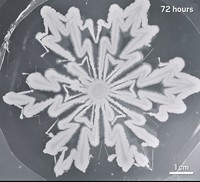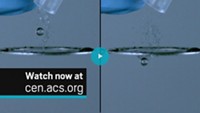Advertisement
Grab your lab coat. Let's get started
Welcome!
Welcome!
Create an account below to get 6 C&EN articles per month, receive newsletters and more - all free.
It seems this is your first time logging in online. Please enter the following information to continue.
As an ACS member you automatically get access to this site. All we need is few more details to create your reading experience.
Not you? Sign in with a different account.
Not you? Sign in with a different account.
ERROR 1
ERROR 1
ERROR 2
ERROR 2
ERROR 2
ERROR 2
ERROR 2
Password and Confirm password must match.
If you have an ACS member number, please enter it here so we can link this account to your membership. (optional)
ERROR 2
ACS values your privacy. By submitting your information, you are gaining access to C&EN and subscribing to our weekly newsletter. We use the information you provide to make your reading experience better, and we will never sell your data to third party members.
Environment
Microbe Transports Contaminants Through Its Fibers
Bioremediation: The organism’s filamentous networks could help spread hydrocarbons through soil, possibly speeding bacterial destruction of pollutants
by Melissae Fellet
May 14, 2012

Bacteria can break down hydrocarbons in the soil, but how quickly the compounds degrade depends on how rapidly they reach the bacteria. Fibrous networks of fungi and related organisms might be able to help, researchers have discovered. Threads in these networks, which transport nutrients through the organisms’ bodies, also transport oily contaminants (Environ. Sci. Technol., DOI: 10.1021/es300810b). The networks might carry contaminants directly to bacteria that can destroy them, the researchers say.
Soil forms a complicated labyrinth of pores that impedes the motion of chemicals or bacteria, says soil biologist Karl Ritz of England’s Cranfield University, who was not involved with the new study. Stirring soil, a typical treatment for small contaminated sites, speeds degradation because it brings bacteria and oil together. Some filamentous organisms might do the same thing, thought Lukas Wick, of the Helmholtz Center for Environmental Research in Germany, because their fibrous structures extend through pores in the soil and could connect contaminants with bacteria.
Fungi and other filamentous organisms grow using thin shoots called hyphae, which carry nutrients much like the blood vessels do in human beings. These hyphae tangle into a network called a mycelium.
Wick and his colleagues wondered if hyphae could act as pipelines to transport contaminants through the soil. To test this idea, they mimicked damp soil using two 1.5-cm-long agar rectangles that separated three similarly sized disks of microbe food. The researchers wiped the fast-growing pseudofungus Pythium ultimum on the central patch of food. Over the course of about five days, as the organism’s mycelium grew, the fibers stretched across each agar block to the food disks. To do so, the threads had to grow across 0.1-cm air gaps between the agar and the food. As a control, the team also created a setup of food disks and agar blocks that didn’t have the pseudofungus present.
Once the fiber network was in place, the researchers spiked one agar rectangle with phenanthrene, a commonly studied pollutant. The researchers measured how much of the chemical traveled through that agar rectangle, past the central food patch, and into the second agar block. They found that phenanthrene reached the far end of the second agar block after 24 hours. Since the hyphae and phenanthrene fluoresce, the researchers used fluorescence microscopy to observe that the chemical was trapped inside sacs, or vesicles, that traveled through the hyphae. In the pseudofungus-less control, the researchers observed, phenanthrene never diffused past the first agar rectangle because it could not use the hyphae to cross the air gap to the central food disk.
Although similar contaminant-carrying filamentous networks could help clean up tainted soil, Wick points out that that the transport could also make soil more toxic to other organisms. The scientists are now studying whether polycyclic aromatic hydrocarbons, which are widespread pollutants, leave the hyphae tips and become available to bacteria that can break them down.
Scientists have known for over a decade that filamentous microbes transport nutrients by diffusion or by pumping them through their hyphae. Seeing the contaminant in vesicles is exciting, Ritz says, because it shows how the organism transports non-nutritious hydrocarbons. If this transport happens in soil, adding the mycelium-growing organisms to soil could be a low-energy method for decontamination, Ritz says.





Join the conversation
Contact the reporter
Submit a Letter to the Editor for publication
Engage with us on Twitter